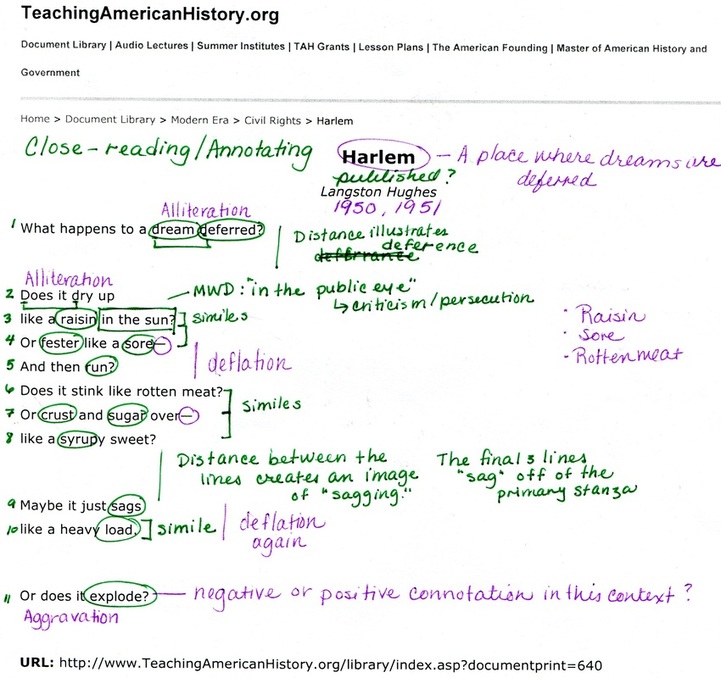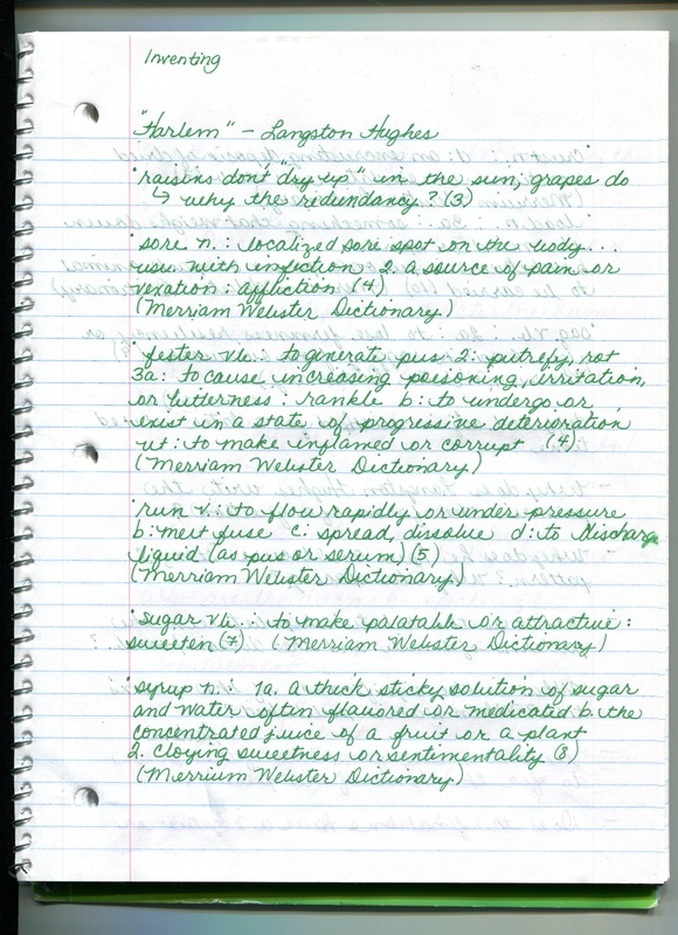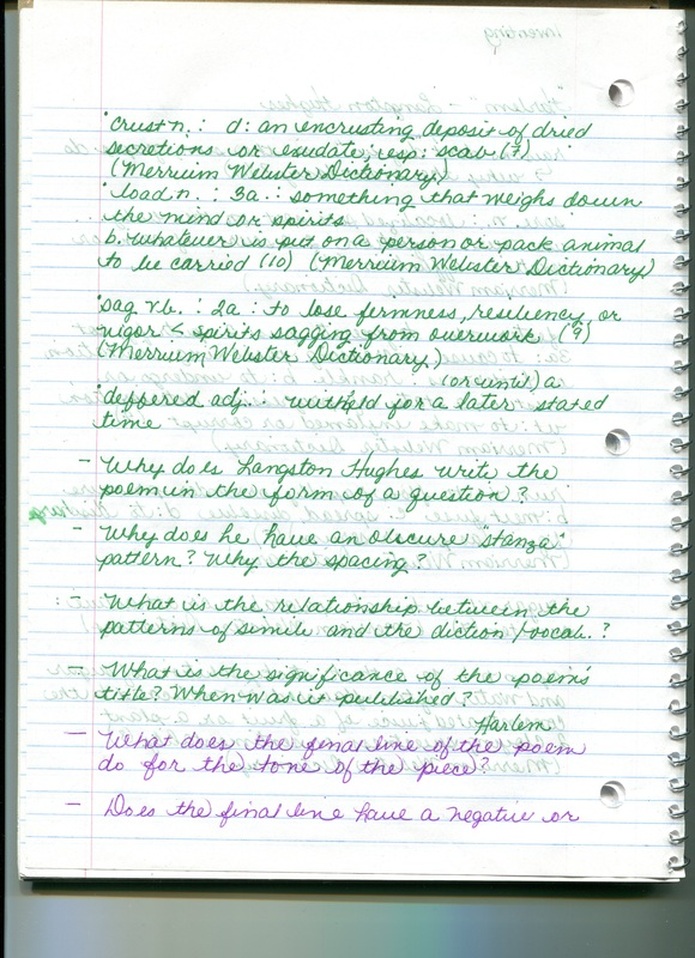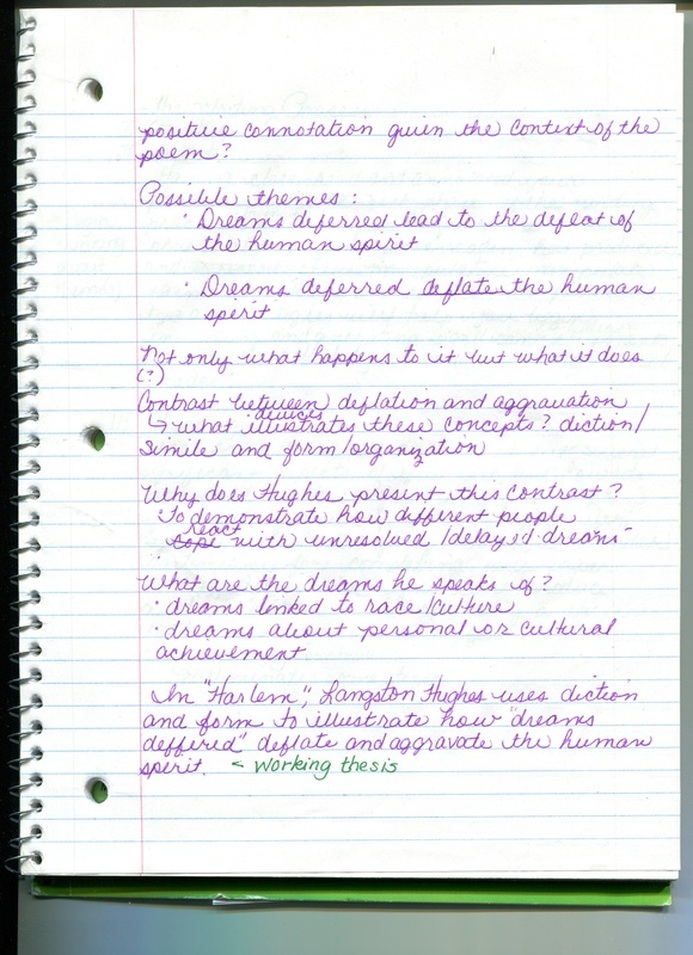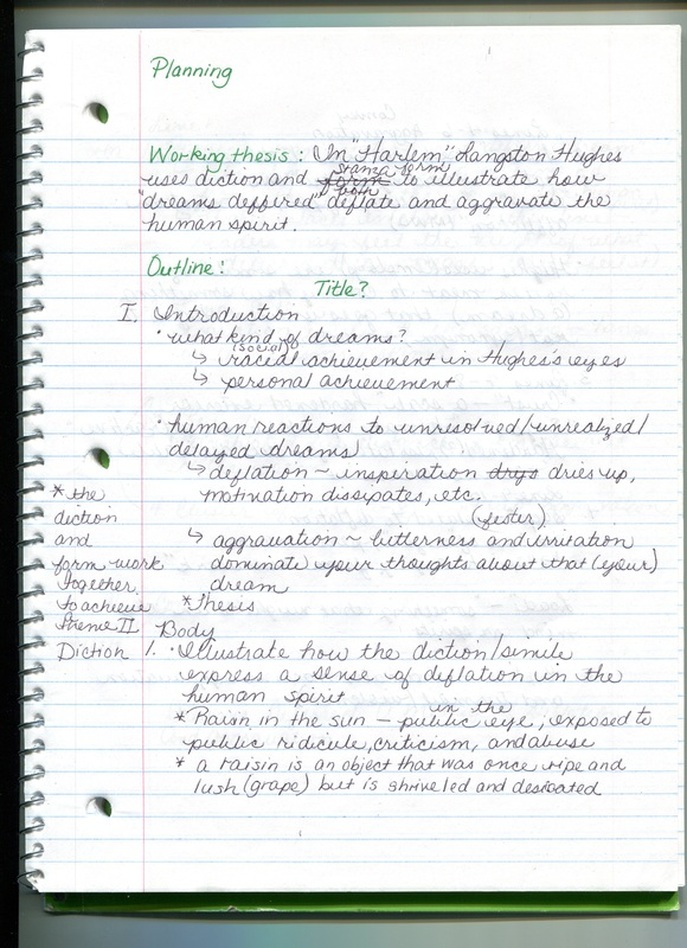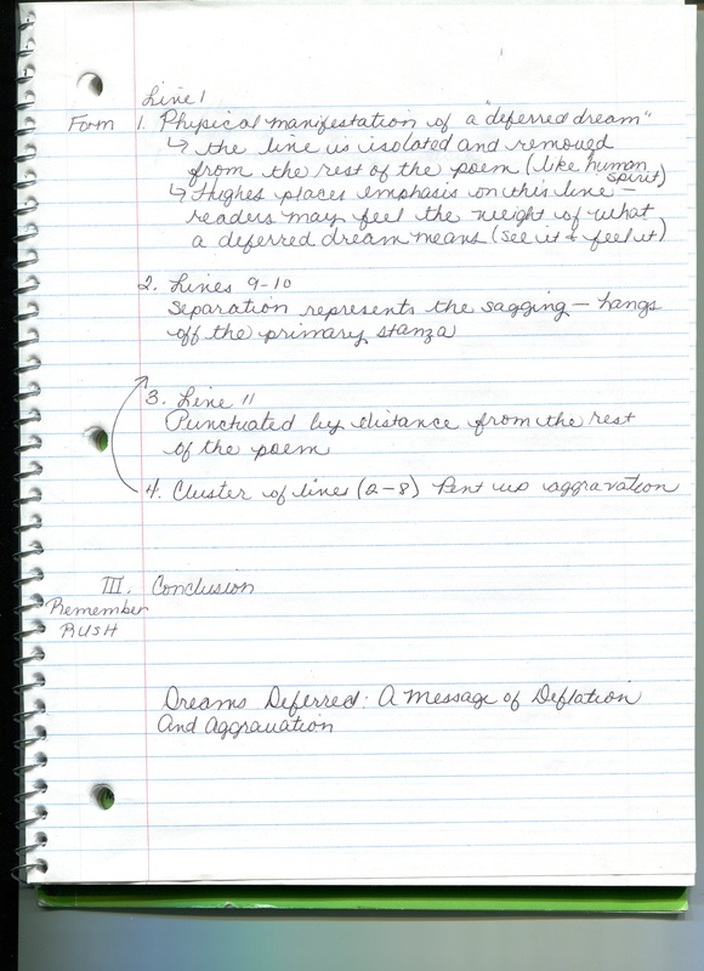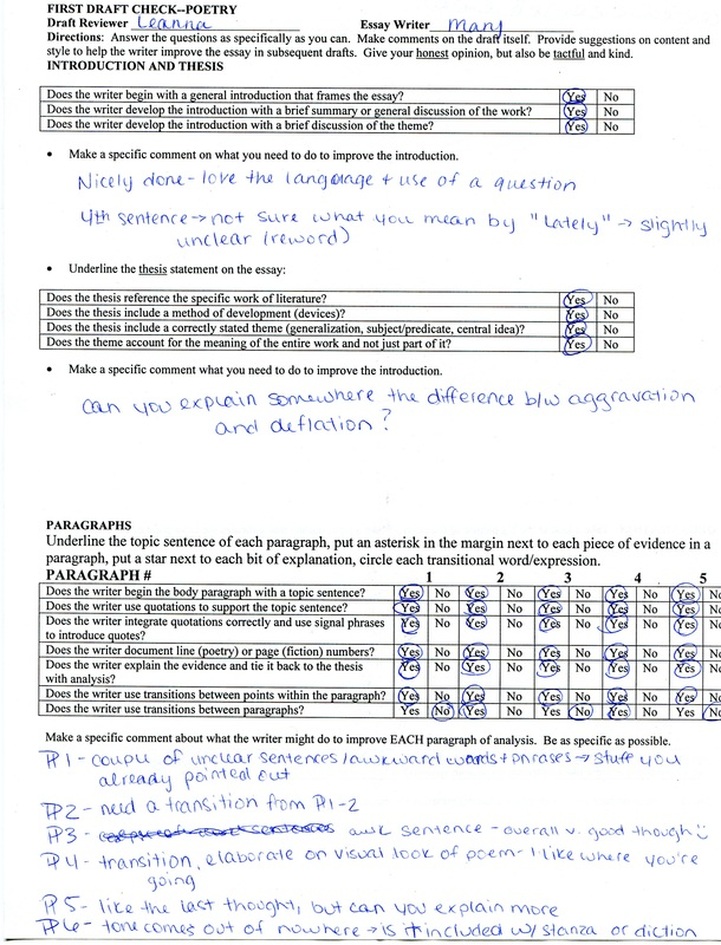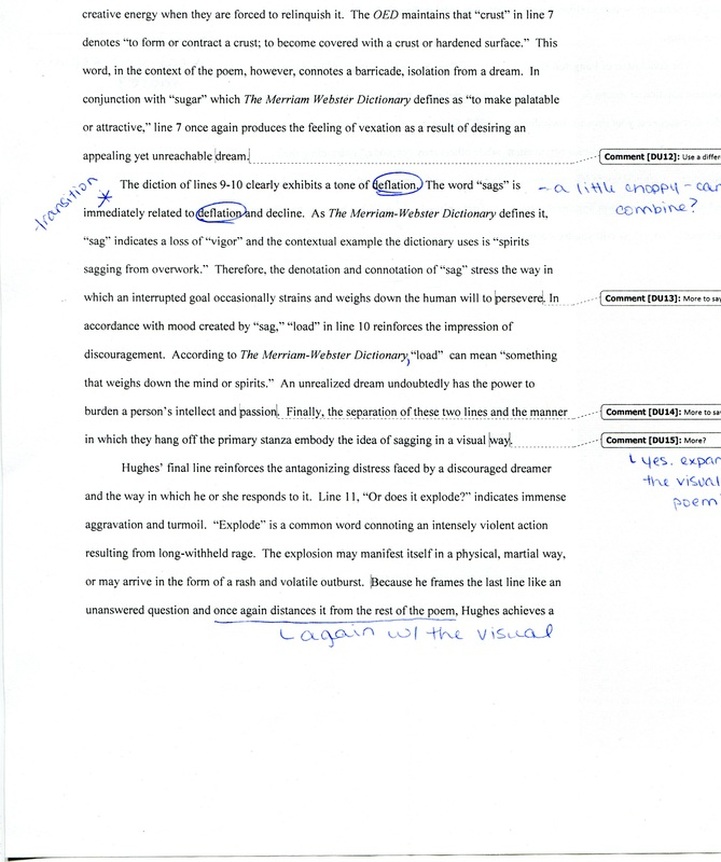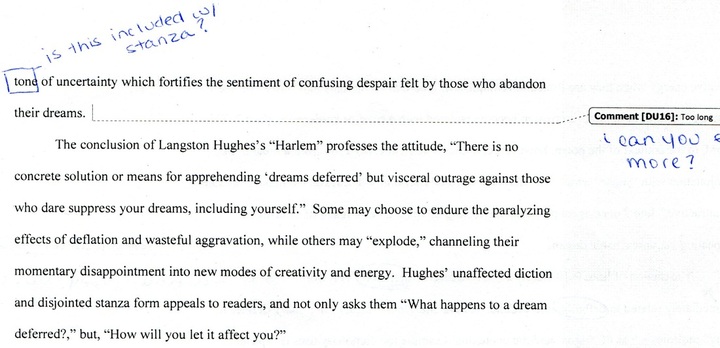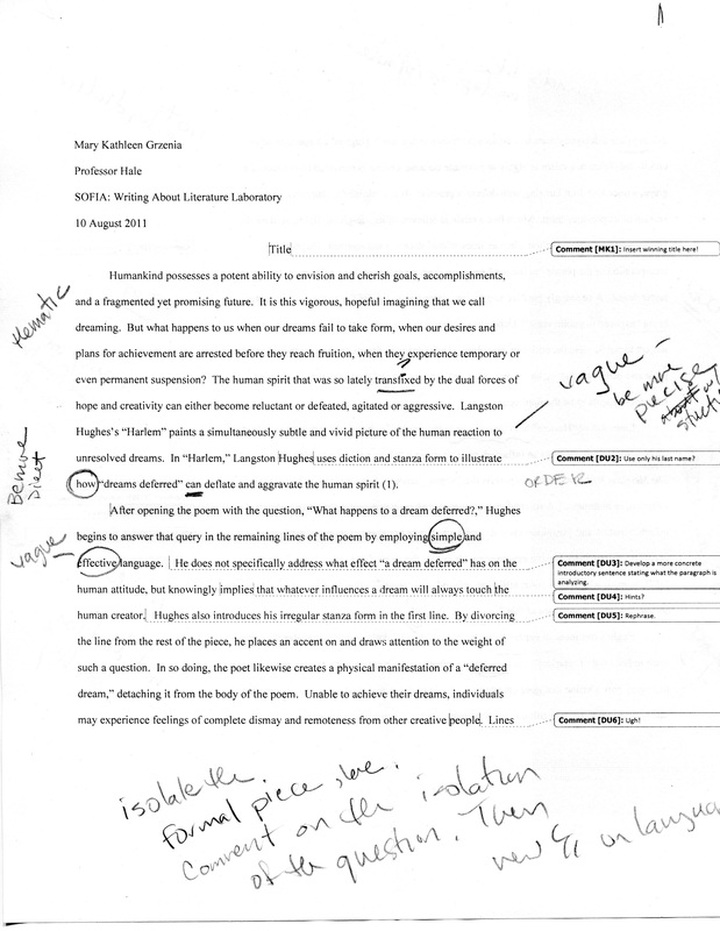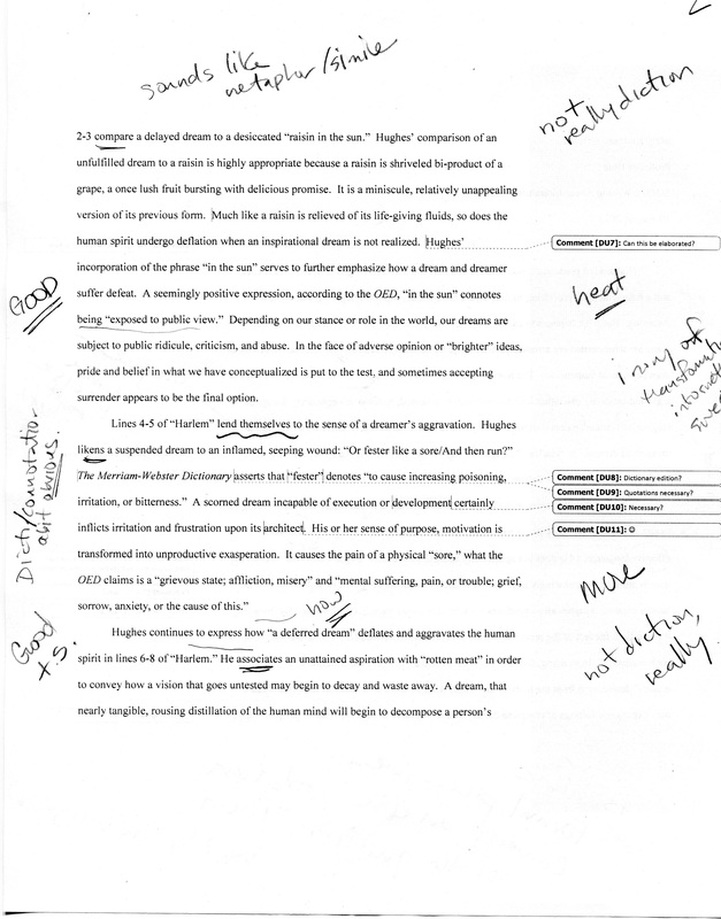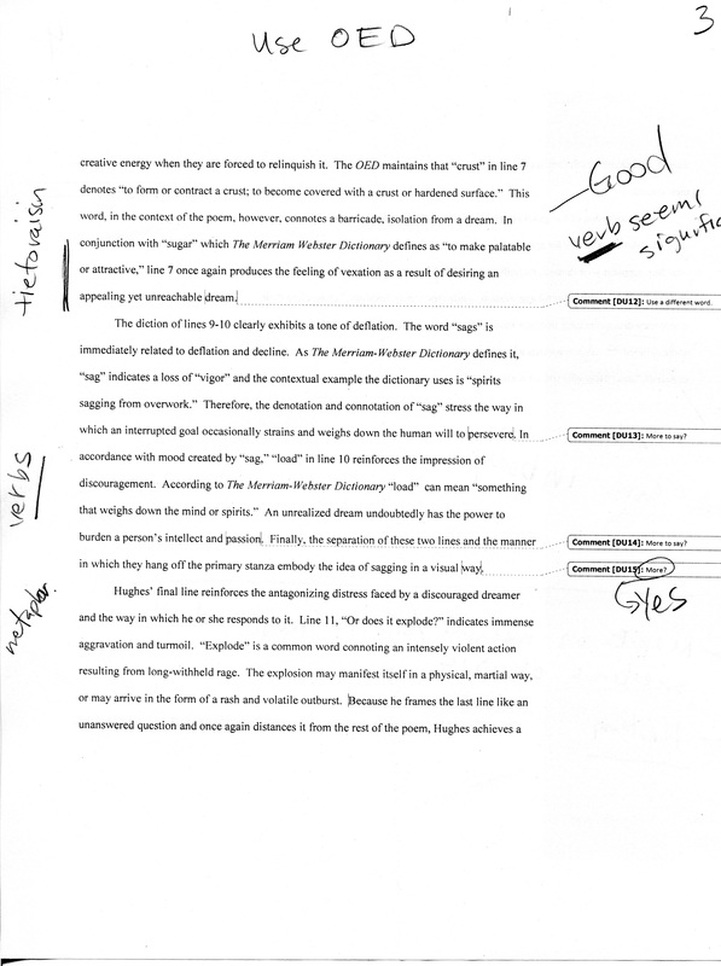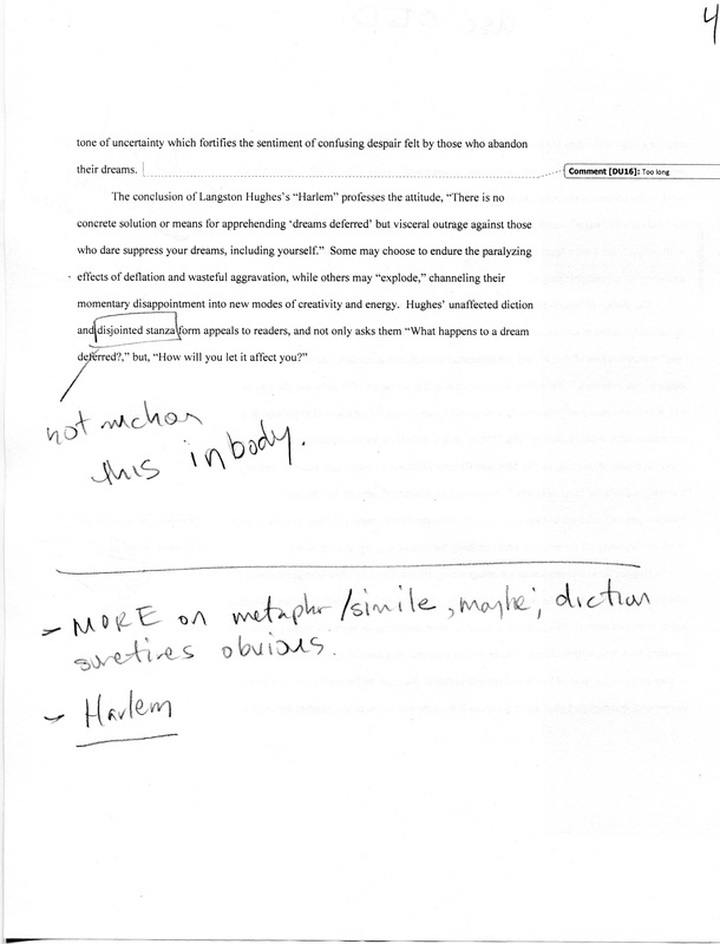“Harlem” by Langston Hughes
Analyzed by Mary Grzenia
Reading
The first time I sat down to close-read and annotate “Harlem,” I used a green pen,
circling words I wanted to look up in the dictionary and connecting patterns of
simile and diction. The next day when I analyzed the text, I used a purple pen
to distinguish between my initial thoughts and ideas and the more fully
developed observations of a second reading.
circling words I wanted to look up in the dictionary and connecting patterns of
simile and diction. The next day when I analyzed the text, I used a purple pen
to distinguish between my initial thoughts and ideas and the more fully
developed observations of a second reading.
Inventing
This page of my journal was dedicated to inventing. As I read “Harlem,” I looked up
words in the dictionary. Although the words and their definitions are simple, I
wanted to better understand their various connotations and denotations. Here is
list of definitions I found.
words in the dictionary. Although the words and their definitions are simple, I
wanted to better understand their various connotations and denotations. Here is
list of definitions I found.
This page of my journal contains a few more definitions and several interpretive
questions. As I read the poem another 3-4 times, I began to see certain
patterns. Asking these interpretive questions helped me connect those patterns
and determine a theme.
questions. As I read the poem another 3-4 times, I began to see certain
patterns. Asking these interpretive questions helped me connect those patterns
and determine a theme.
Having asked several interpretive questions, I jotted down a couple different themes.
But I wanted to know more: how were those themes developed? What devices
illustrated “deflation”? Did the poem address “aggravation” as well? I also
wanted to know what kinds of dreams Hughes was talking about. Although I didn’t
address this concept in my final essay, I believe asking that question helped me
develop a more general focus for my paper. At the bottom of the page I wrote out
a basic working thesis.
But I wanted to know more: how were those themes developed? What devices
illustrated “deflation”? Did the poem address “aggravation” as well? I also
wanted to know what kinds of dreams Hughes was talking about. Although I didn’t
address this concept in my final essay, I believe asking that question helped me
develop a more general focus for my paper. At the bottom of the page I wrote out
a basic working thesis.
Planning
With a working thesis in mind, I began to map out a plan for my paper. I wrote my
working thesis statement at the top of the page and then began outlining my
introduction, body, and conclusion. For each section of the paper’s outline, I
added commentary and quotes. This outline is the definition of organized chaos!
I wrote in the margin, added words in parentheses, crossed out misspelled words,
and incorporated dictionary definitions. Nevertheless, putting my thoughts on
paper in a semi-organized way proved to be an invaluable step by the time I sat
down to write my first draft.
working thesis statement at the top of the page and then began outlining my
introduction, body, and conclusion. For each section of the paper’s outline, I
added commentary and quotes. This outline is the definition of organized chaos!
I wrote in the margin, added words in parentheses, crossed out misspelled words,
and incorporated dictionary definitions. Nevertheless, putting my thoughts on
paper in a semi-organized way proved to be an invaluable step by the time I sat
down to write my first draft.
Drafting
Satisfied with my preliminary outline, I spent the following afternoon writing my first draft. I typically hand write my first drafts, but this time I typed it. During this first attempt at writing the essay, I inserted comments and reminders to myself in the Word document using the “Comments” and “Track Changes” features. When I went back to write my second draft, I used those comments and notes to elaborate on incomplete concepts. You can view a PDF version of my rough draft below.
Peer Review
Leanna Waldron filled out this peer review sheet for me after she read through my first draft.
I used her suggestions and advice when I wrote my second draft.
I used her suggestions and advice when I wrote my second draft.
Leanna’s peer review copy of my first draft with commentary and suggestions.
Professor Rob Hale’s peer review copy of my first draft with commentary and feedback.
Revising/Finalizing
I revised my essay three times in total. I made the most changes and revisions in the second draft, and corrected/clarified nitpicky aspects in my third and fourth drafts. In addition, I modified my thesis statement three times. The final version is clear and concise; the body of the paper thoroughly analyzes the theme and devices it states.

